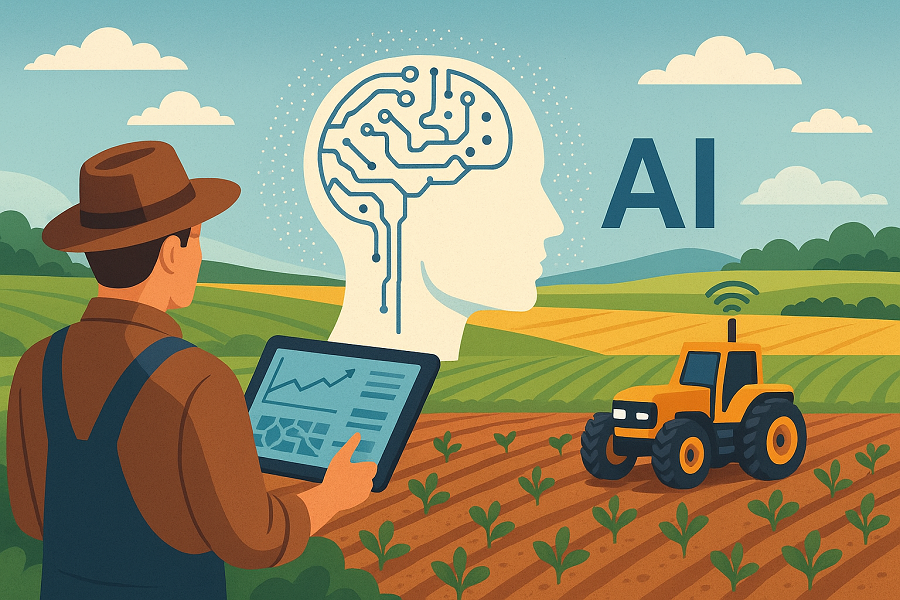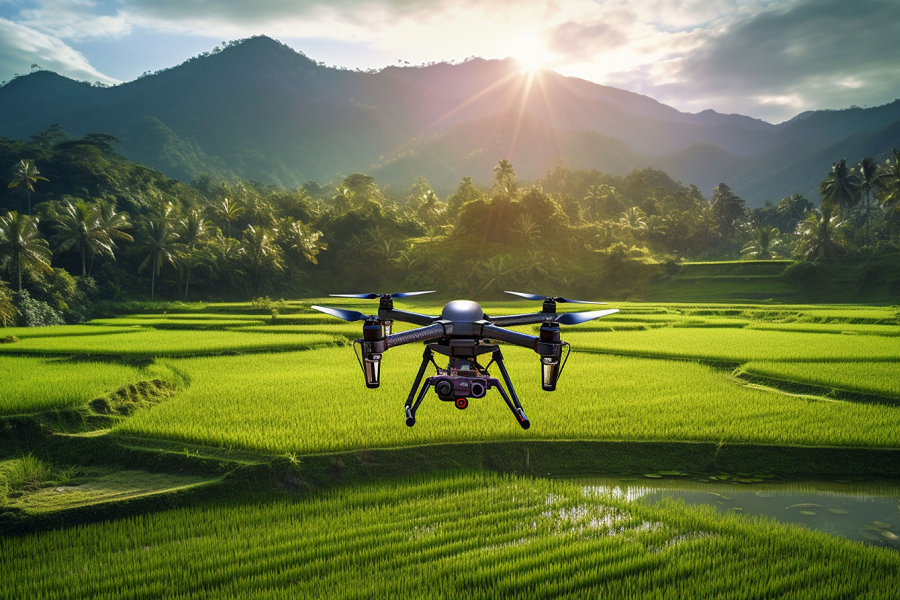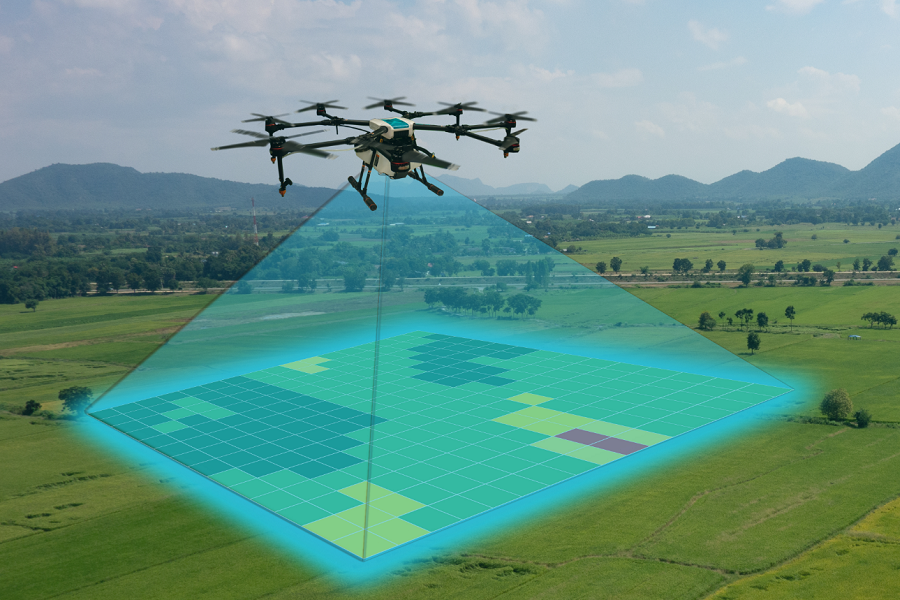by Antonio Donnangelo
Share
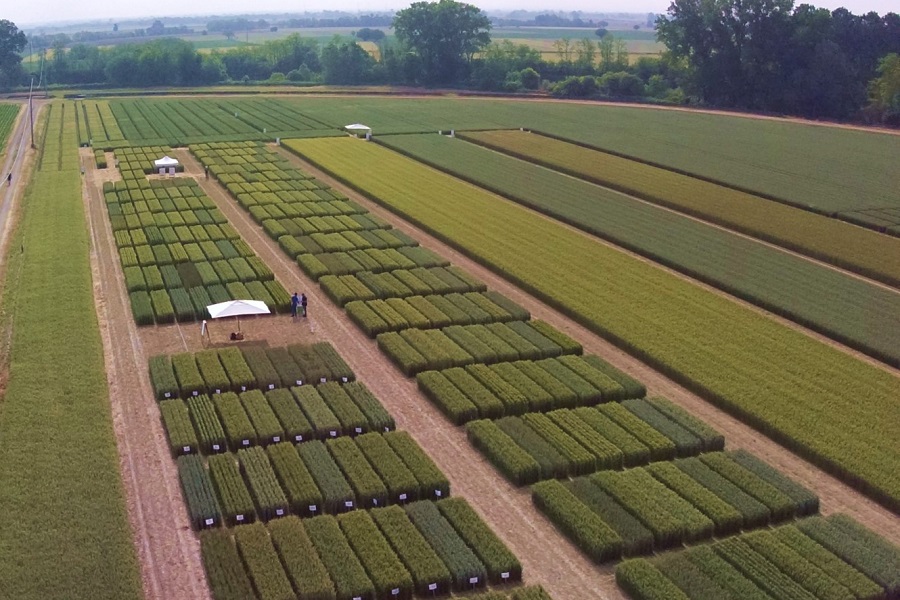
Introduction
The use of
remote sensing by drone in agriculture
revolutionized the way we monitor and manage crops. Through these technologies it is possible to capture images and
Visible (RGB) and multispectral data with high resolution
covering large areas of terrain in a short time, enabling
rapid and accurate mapping of fields.
With a single survey, one can highlight the characteristics of the crops at that given time but make multi-temporal surveys makes it possible to monitor the evolution of crops over time, making it possible to analyze and compare changes in plant conditions, such as growth, biomass volume, vegetative vigor, and the presence of disease or stress.
Case Study.
On behalf of an assay center, multi-temporal surveys were performed from February to May 2023. Each flight was performed on 64 wheat plots measuring 3×7 m, each subjected to a different treatment with biostimulants.
The flight height was set at 30 meters height by taking RGB and multispectral photos with 85% frontal and lateral image overlap.
Through the analysis of the images taken, it was possible to reconstruct for each survey the 3D digital model (Fig.1) and reflectance maps of the test area.
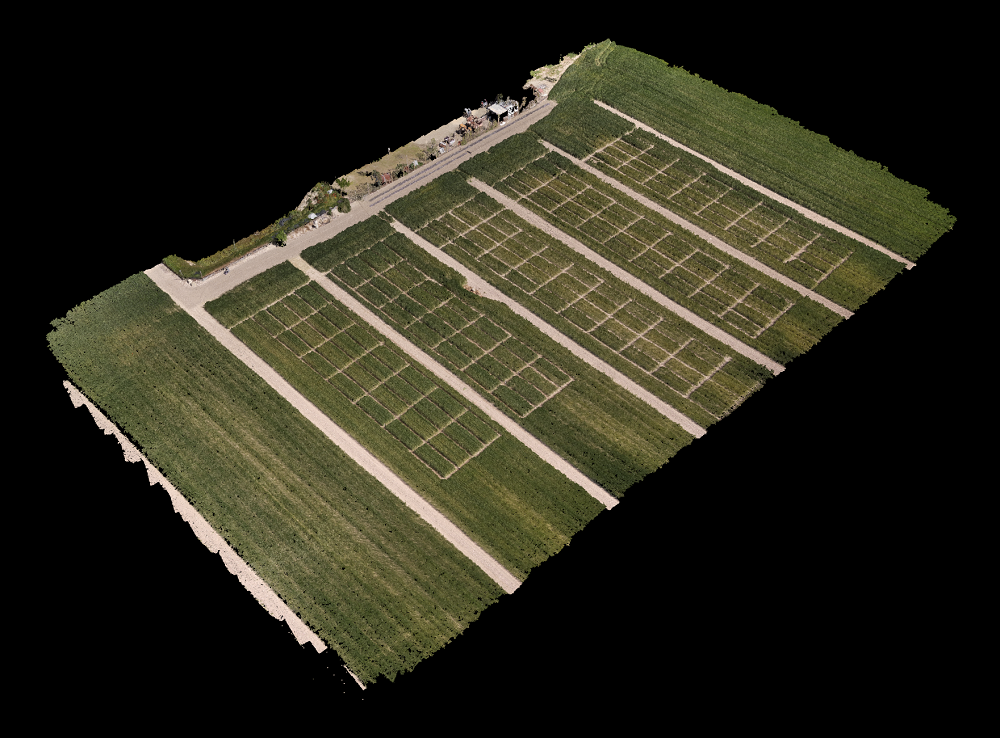
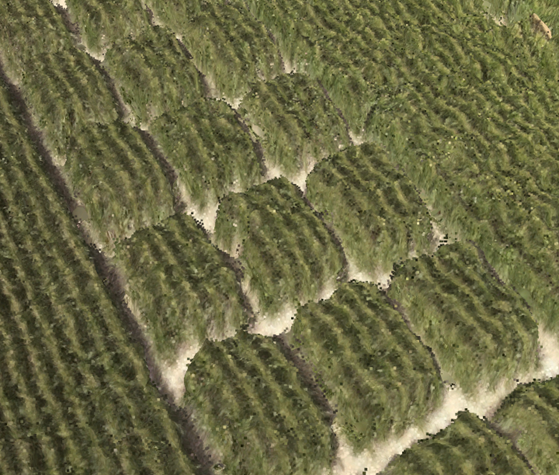
Fig.1: Multi-temporal survey on wheat field: 3D point cloud of the test area with the various plots.
During the individual surveys, the following were obtained for each plot: vegetation area, biomass volume and some vegetation indices (NDVI, NDRE, GNDVI).
Through the multi-temporal surveys it was possible to have a dynamic monitoring, so as to assess not only the differences between plots at each survey but also to numerically measure the evolution of each individual plot over time, showing, for example, that some plots that started out “disadvantaged” at the beginning were later found to have a larger area than others that started out with a larger land cover (Fig. 2).
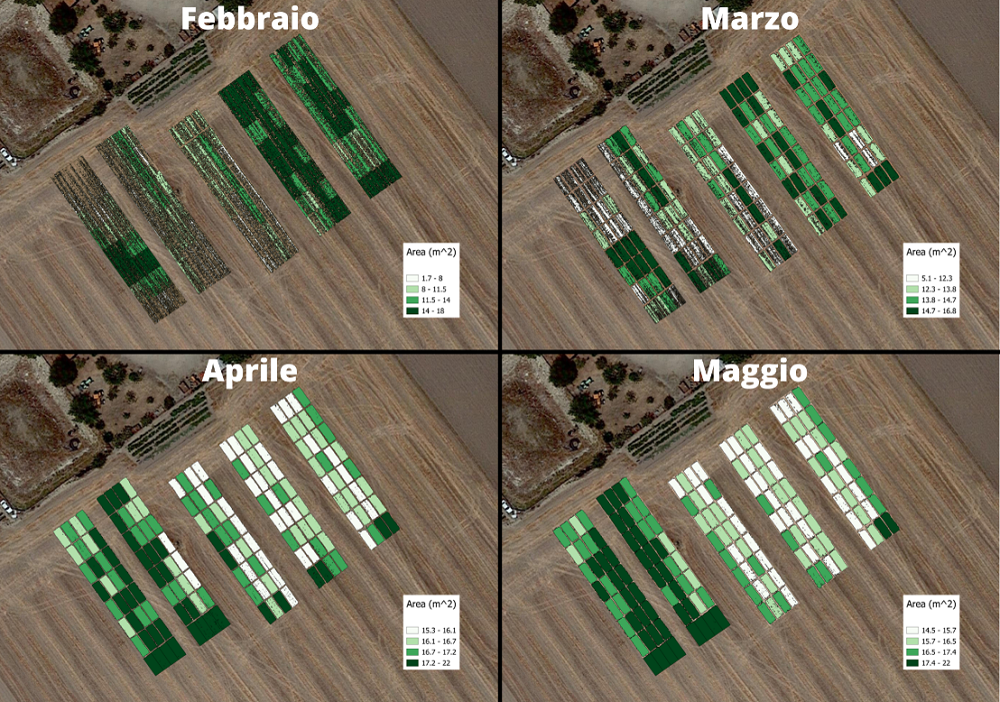
Fig.2: Multi-temporal survey on wheat field: area covered by vegetation in the different surveys for each plot.
Similar computations were done for biomass volume (Fig. 3) and vegetative vigor (NDVI index) (Fig. 4).
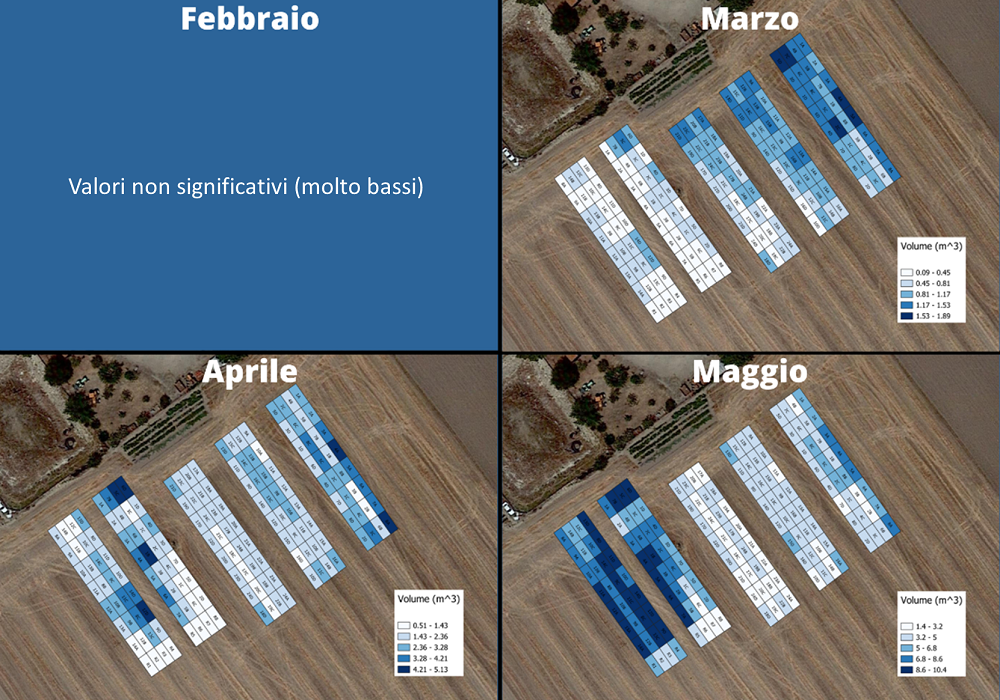
Fig.3: Multi-temporal survey on wheat field: 3D point cloud and biomass volume map in the different surveys for each plot.
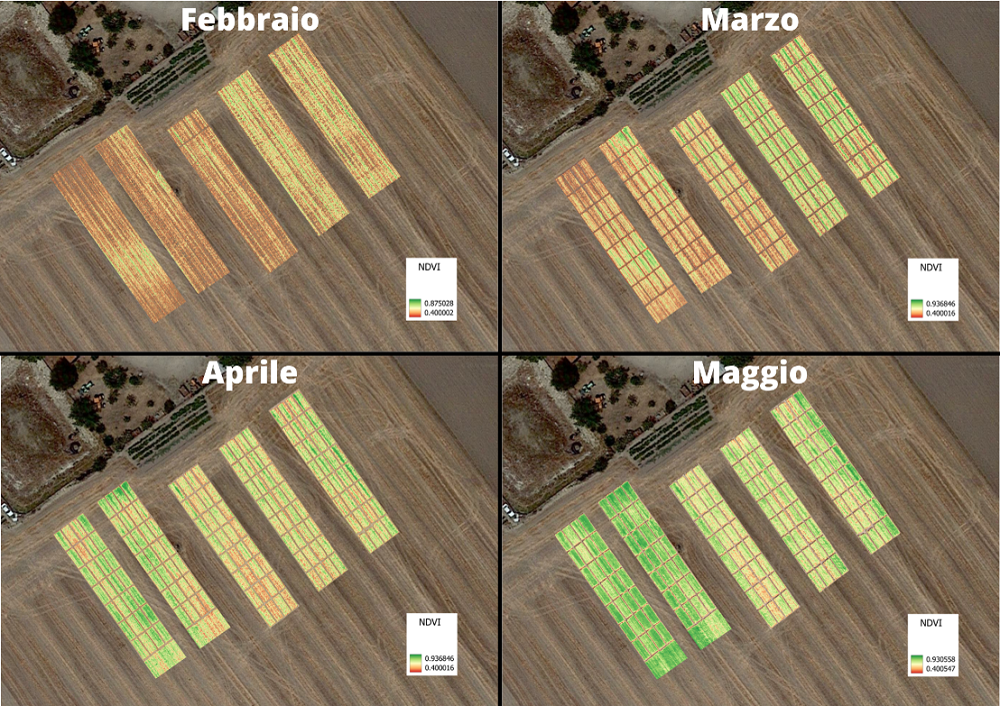
Fig.4: Multi-temporal survey on wheat field: vegetative vigor (NDVI index) in the different surveys for each plot.
Conclusions
Through the use of drone remote sensing and processing of the collected data, it was possible to identify differences in the analyzed parameters between plots in each flight, and through the multi-temporal surveys, it was possible to analyze and compare the temporal variations in the parameters of the individual plotssuch as growth, biomass volume, and vigor.
For the assay centers, multi-temporal drone surveys offer the possibility of monitoring crop development over time, optimally and objectively evaluating the development of individual plots to make the necessary assessments regarding the products tested, saving time for field measurements, which in any case are essential to search for correlations between the data from drone and the data detected on the ground.
In conclusion,
multi-temporal drone surveys provide a detailed and dynamic picture of field conditions over time
, enabling farmers and technicians to make data-driven decisions and improve the efficiency, sustainability and productivity of their operations, enabling timely and targeted interventions.
Using multi-temporal surveys, farmers can assess the effectiveness of irrigation, fertilization and resource management practices throughout the growing season. This allows them to optimize their use, Avoiding waste and reducing costs.

